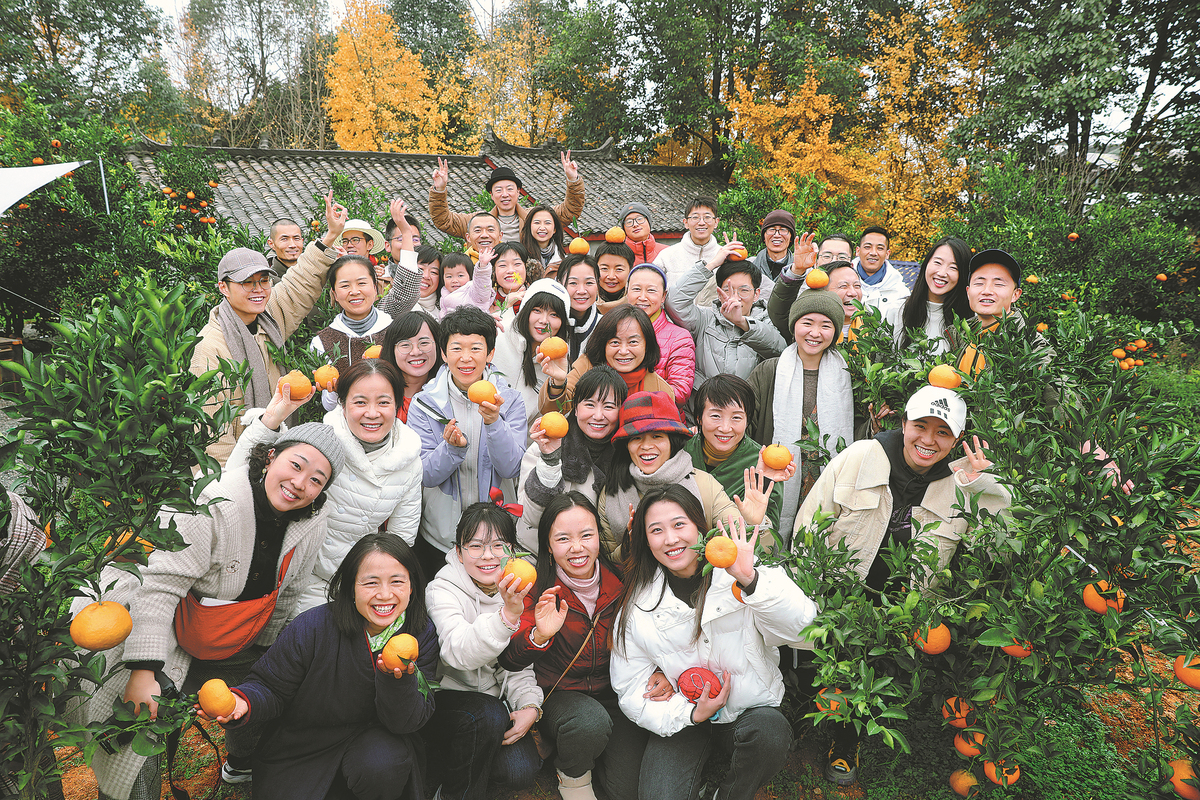Rural vitalization efforts reap big success
Young residents from cities root themselves in agriculture to truly understand the countryside, deeply integrate with villagers


While people from all over the country usually come to China's major cities to pursue their dreams, some urban youths have gone in a different direction.
More than 70 youngsters from cities including Beijing, Shanghai, Guangzhou, and Shenzhen have settled in Tieniu village in Pujiang county of Chengdu, capital of Sichuan province, as part of a "co-creation" experiment for rural vitalization.
Located about 50 kilometers from Chengdu's urban area, Tieniu village covers 9.59 square kilometers and is home to 1,073 households and 3,634 residents.
The villagers' main sources of income used to be tangerines, kiwis and fish farming.
"Due to limited development opportunities in the village, educated youth would migrate to cities," said Xu Bangmiao, Party secretary of the village.
The changes began in 2017, when rural vitalization was proposed as a key strategy at the 19th National Congress of the Communist Party of China, and Shi Guoping, a US-registered architect, was invited as the village's chief planner.
Shi refers to himself as a "researcher of rural life" who is conducting a "social experiment" to reconnect today's urban youth with the countryside.
In contrast to many villages keen to develop cultural tourism as their pillar industry, Shi believes that agriculture is the foundation of rural areas. He says rural vitalization must be firmly based on agriculture.
"Only by rooting themselves in agriculture can new residents truly understand rural areas, and deeply integrate with villagers," he said.
Tangerine capital
Tieniu is renowned for its tangerines, with 9,900 mu (660 hectares) of tangerine orchards, accounting for 78 percent of the total plantation area in the village. Therefore, Shi started his experiment with tangerines.
Although the Pujiang ugly tangerine has been recognized as a "national geographical indication protection product", its cultivation methods and industry model remain traditional. In recent years, it has faced issues such as excessive use of pesticides, soil acidification and fierce competition from homogeneous products.
To chart a new path for the tangerine industry, Shi started by restoring ecological balance and soil health through ecological planting methods.
"Ecological planting is the trend and an essential pathway for the sustainable development of agriculture. Someone must step up and undertake this endeavor," Shi said.
Shi and his team rented a tangerine orchard of 0.6 hectare and introduced an ecological agricultural production concept, replacing chemical fertilizers with organic ones and chemical control with green pest management methods.
After two years of trials, the tangerines produced from Shi's orchard gained market recognition. Despite a 40 percent reduction in yield per mu compared to traditional methods, the organic tangerines were sold at prices exceeding 20 yuan ($2.8) per kilogram, about three times the price of regular ones.
"The green industry development concepts and models brought by the new villagers are exactly what we need most right now," Xu said.
























